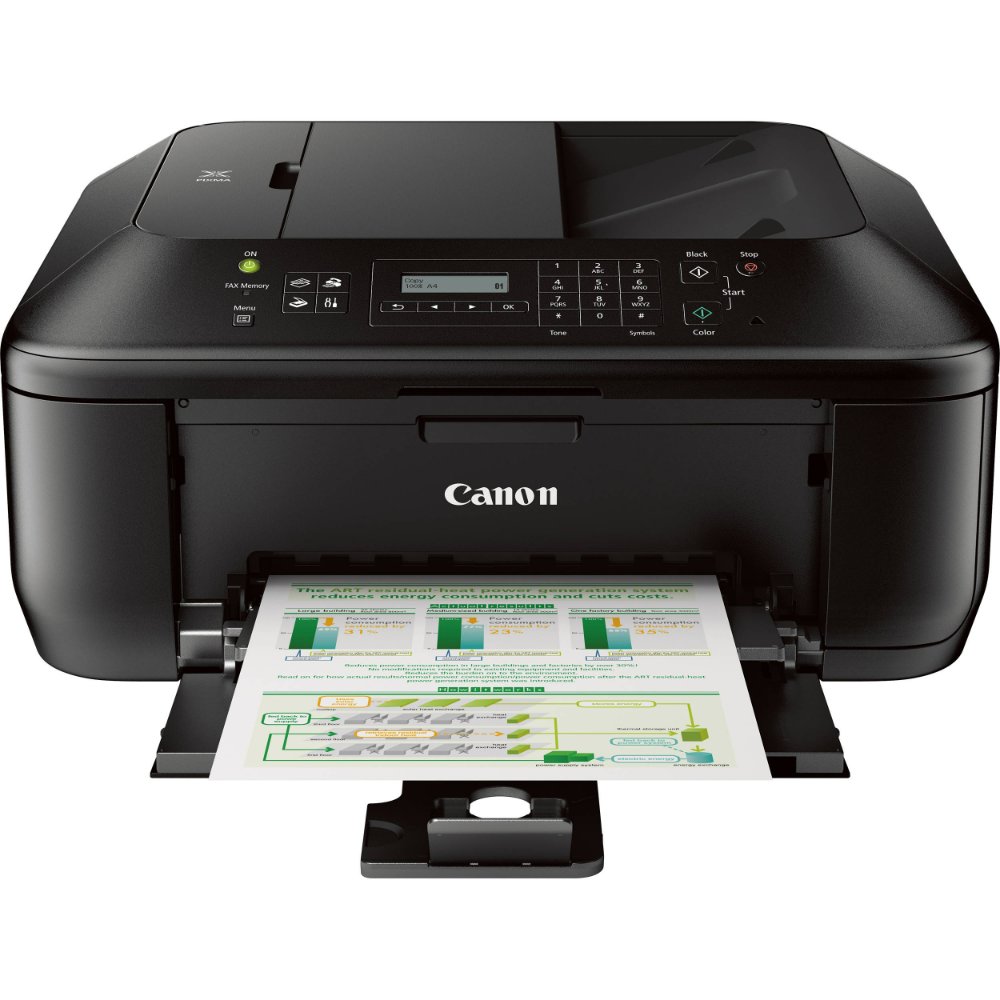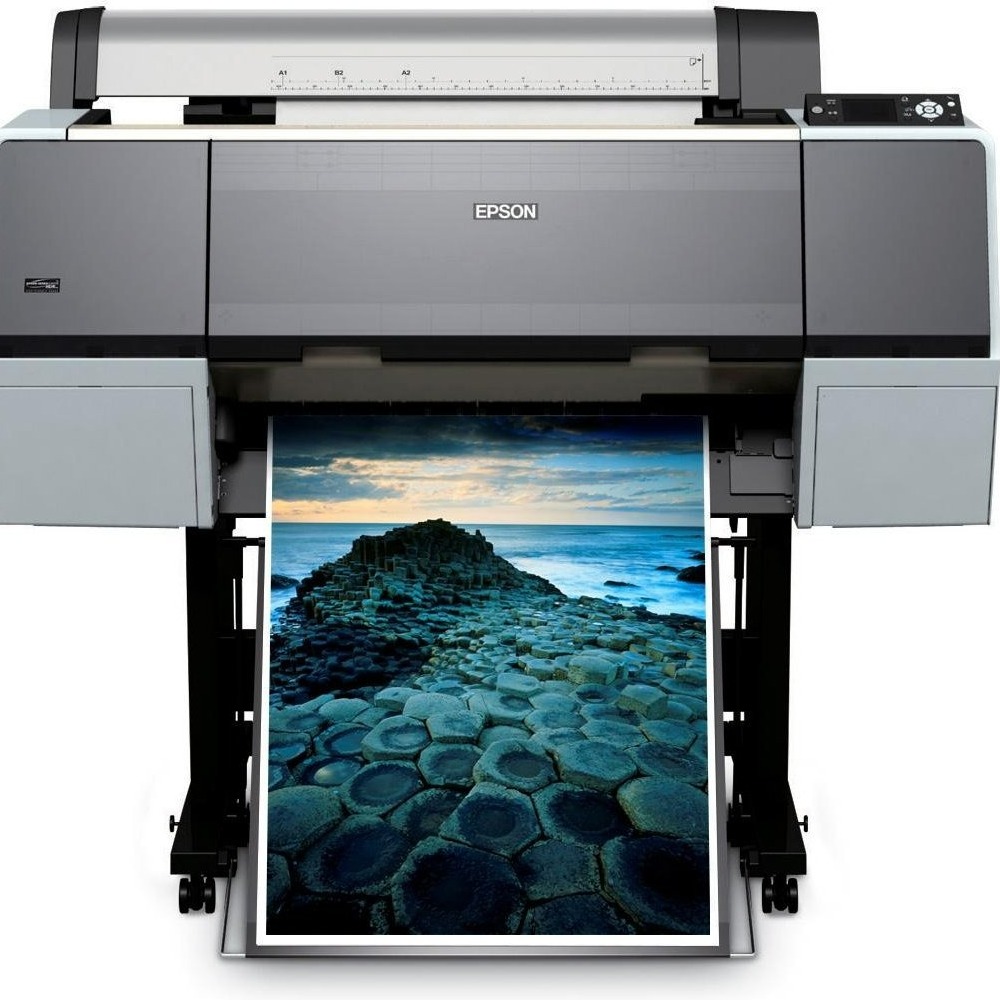Different Types of Wireless Printers
Choosing the right type of wireless printer depends on your specific needs, whether it’s for home or office use. Let’s explore the most common types of wireless printers in the market today.
Inkjet Printers
Inkjet printers are popular for their versatility and affordability. They work by spraying tiny droplets of ink onto paper. These printers are ideal for printing high-quality photos and documents with rich color gradients. They accommodate various paper types and sizes, making them suitable for a range of printing tasks. Inkjet printers may have slower print speeds compared to laser printers but are usually less expensive upfront.
Laser Printers
Laser printers offer high-speed printing and are known for their precision and high print quality, particularly with text documents. These devices use a laser beam to transfer toner to paper, which results in sharp and smudge-free prints. They are cost-efficient for high-volume printing, as toner cartridges last longer than ink cartridges. This makes laser printers a preferred choice for office settings with significant daily printing needs.
Thermal Printers
Thermal printers are less common but serve unique functions, such as printing labels, receipts, or shipping tags. They use heat to transfer an image onto thermal paper and are renowned for their reliability and low maintenance requirements. Since they do not use ink or toner, running costs can be lower, but they are limited to printing on specialized thermal paper. Thermal printers are a good fit for businesses that require fast and continuous printing like in retail or hospitality settings.
When considering a wireless printer, it’s important to evaluate these options against your intended use, print volume, and budget. Each type offers distinct benefits and limitations, and the right choice will contribute to a seamless printing experience.

Important Features to Consider
When looking for a wireless printer, several key features can influence your decision. These are critical to consider to ensure the printer meets your needs and delivers a seamless stress-free printing experience.
Connectivity Options
Choosing a printer with versatile connectivity options allows for greater flexibility. Look for printers offering Wi-Fi, Bluetooth, NFC, or Ethernet capabilities. Wireless connectivity lets you print from multiple devices without the need for cables. Some printers also support cloud services, enabling you to print from anywhere with internet access.
Print Speed and Quality
The print speed, measured in pages per minute (ppm), is essential if you have high-volume printing needs. High-speed printing can save time in busy environments. However, quality should not be compromised. Ensure the printer provides clear, crisp prints with good color accuracy, especially if you’re printing photos or presentations.
Duplex Printing Capabilities
Duplex printing is a feature that allows printing on both sides of the paper. It is eco-friendly and reduces paper usage by up to 50 percent. Duplex printing can also give documents a professional look and feel. Not all wireless printers have automatic duplex printing, so check if this feature is available if it’s important to you.
Compatibility with Devices and Operating Systems
The wireless printer you choose should work well with the devices and operating systems you use. Compatibility with Windows, macOS, Android, and iOS ensures smooth operation across all your gadgets. Some printers offer dedicated apps for easier control from smartphones and tablets. Ensure the printer’s software is regularly updated for sustained compatibility and security.
Top Wireless Printer Models for Home and Office
Choosing a wireless printer can be challenging with many models available. We have researched and identified top picks for both home and office use. These models offer a mix of the important features mentioned earlier.
Best Models for Home Use
For home users, the priorities are often affordability, ease of use, and versatility. A great wireless printer for home use should handle various types of print jobs. Look for one that can print both documents and photos with ease. Here are a few recommendations:
- HP Envy 6020 – Ideal for everyday printing needs, it offers great print quality for both text and photos. It has simple connectivity with Wi-Fi and can easily cater to a small family’s printing needs.
- Canon Pixma MG3620 – With its compact size, this printer is a fit for homes with limited space. It supports duplex printing and has an excellent color output for photo printing.
- Epson EcoTank ET-2760 – This printer is cost-effective over the long run due to its cartridge-free printing. It’s excellent for families who print regularly and want to minimize ongoing costs.
Make sure to consider the space where you’ll set up the printer and check for compatibility with the devices your family uses most.

Recommended Printers for Office Settings
Office environments generally require printers with faster print speeds, higher durability, and more advanced connectivity. Here are some top choices:
- Brother HL-L8360CDW – A robust choice with high print speeds and excellent print quality. Its toner lasts long, which is cost-efficient for frequent use.
- HP LaserJet Pro M479fdw – A versatile all-in-one that meets the demands of a busy office. It supports duplex printing and scan-to-email functionality.
- Lexmark B2236dw –Known for its reliability and compact design, this model is suitable for small offices. It provides professional-quality prints and is easy to integrate into an existing network.
Evaluate the print volume your office handles and consider printers with high-duty cycles if your office’s printing demand is extensive.
Selecting from these models based on your environment will help you achieve seamless and efficient printing, whether at home or in the office.
Setting Up Your Wireless Printer
Setting up your wireless printer properly is essential for hassle-free use. With the right steps, you can start printing in no time.
Installation Process
- Unpack your printer, and follow the quick start guide provided in the box.
- Insert the ink or toner cartridges into the designated slots with care.
- Power on the printer and use the printer’s LCD panel to connect to Wi-Fi.
- Install the printer drivers and software on your computer, available from the manufacturer’s website.
- For mobile devices, download the printer’s app and follow on-screen instructions.
- Print a test page to confirm everything is working as expected.
Ensure the printer’s firmware is up-to-date for the best performance.
Troubleshooting Common Set-Up Issues
If you encounter issues during setup, don’t worry. Here are some fixes:
- Unable to connect to Wi-Fi: Check your network settings, and ensure your printer is within range.
- Driver installation problems: Download the latest drivers or contact the printer’s support team.
- Not printing: Check the printer queue and confirm there are no errors.
- Poor print quality: Align the print head and clean the nozzles if needed.
- Paper jams: Remove paper carefully, check for foreign objects inside the printer.
Keep your user manual handy for quick reference and troubleshooting tips.

Maximizing Printer Efficiency
Maintaining peak printer performance not only ensures consistent print quality but also extends the life of your wireless printer. There are several measures you can adopt to maximize the efficiency of your wireless printer.
Regular Maintenance Tips
- Keep it clean: Dust and debris can clog your printer. Regularly wipe the exterior and interior with a dry, lint-free cloth.
- Check cartridges: Replace ink or toner cartridges before they run out to avoid print interruptions and potential damage.
- Update software: Keep your printer’s firmware and software up to date to fix bugs and improve performance.
- Run diagnostics: Use built-in diagnostic tools to check for any issues with print quality or connectivity.
- Use quality supplies: Opt for high-quality paper and OEM cartridges to prevent jams and ensure the best output.
By following these tips, your wireless printer should run smoothly and efficiently over time.
Optimizing Network for Printing
- Stable Wi-Fi signal: Ensure your printer has a strong wireless connection. Place it close to your router.
- Bandwidth management: Make sure other devices on the network don’t hog bandwidth when you need to print large files.
- Secure network: Protect your network with a strong password to prevent unauthorized use which can slow your printing.
- Dedicated IP: Assign a fixed IP address to avoid printer disconnections from the network.
- Regular restarts: Reboot your printer and networking equipment occasionally to clear potential errors and refresh connections.
Network optimization can significantly improve your wireless printer’s reliability and response times.
Security Considerations for Wireless Printers
In today’s connected world, securing your wireless printer is vital. Without proper safeguards, your documents could be at risk. Let’s dive into ways to protect your wireless network and the data security features you should look for in wireless printers.
Protecting Your Wireless Network
Change default passwords: Default passwords are easy targets for attackers. Create a strong, unique password.
Enable network encryption: Use Wi-Fi Protected Access (WPA) or WPA2 encryption to shield your network.
Disable printer’s public access: Limit your printer’s network visibility to prevent unauthorized access.
Regularly update firmware: Manufacturers often release updates with security fixes. Ensure your printer’s firmware is current.
Data Security Features in Wireless Printers
Secure Print Release: Some printers hold print jobs until a PIN is entered, keeping documents confidential.
User Authentication: This feature limits printer access to authorized personnel only.
Data Encryption: Look for printers that encrypt data sent over the network, keeping sensitive information secure.
Document Tracking: Advanced printers maintain logs of printed documents to monitor access and usage.
When choosing a wireless printer, consider both network protection and built-in data security features. These considerations are key to a resilient wireless printing setup.
The Future of Wireless Printing Technology
Wireless printing technology is constantly advancing. It is shaping the future with exciting new features and capabilities.
Innovations on the Horizon
New innovations in wireless printer tech are making printers faster, more efficient, and easier to use.
- Voice-activated printing is emerging, allowing hands-free operation.
- 3D printing integration promises to take wireless printing beyond paper.
- Eco-friendly options are being developed, focusing on sustainability with less waste.
- AI-powered maintenance can predict and prevent printer issues before they occur.
- Advanced security features are being incorporated to protect sensitive data in printed materials.
These innovations aim to streamline printing tasks and cater to evolving user needs.
How Wireless Printing is Shaping the Workplace
Wireless printers are transforming the workplace with better connectivity and versatility.
- They support remote work by enabling printing from any location.
- Increased collaboration is possible as teams share printers effortlessly.
- Workflows are more efficient with printers that handle multiple tasks seamlessly.
- The reduction of cables leads to a tidier and more flexible office layout.
- Cost savings are realized through features like automatic duplex printing and energy-efficient operations.
Ultimately, wireless printing technology is becoming integral to modern, smart workplaces.